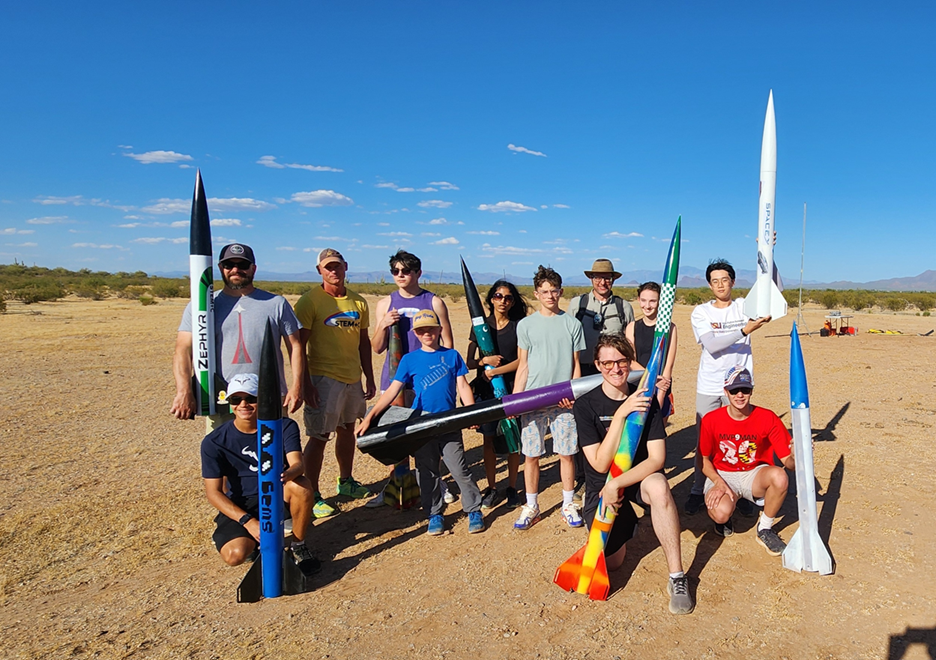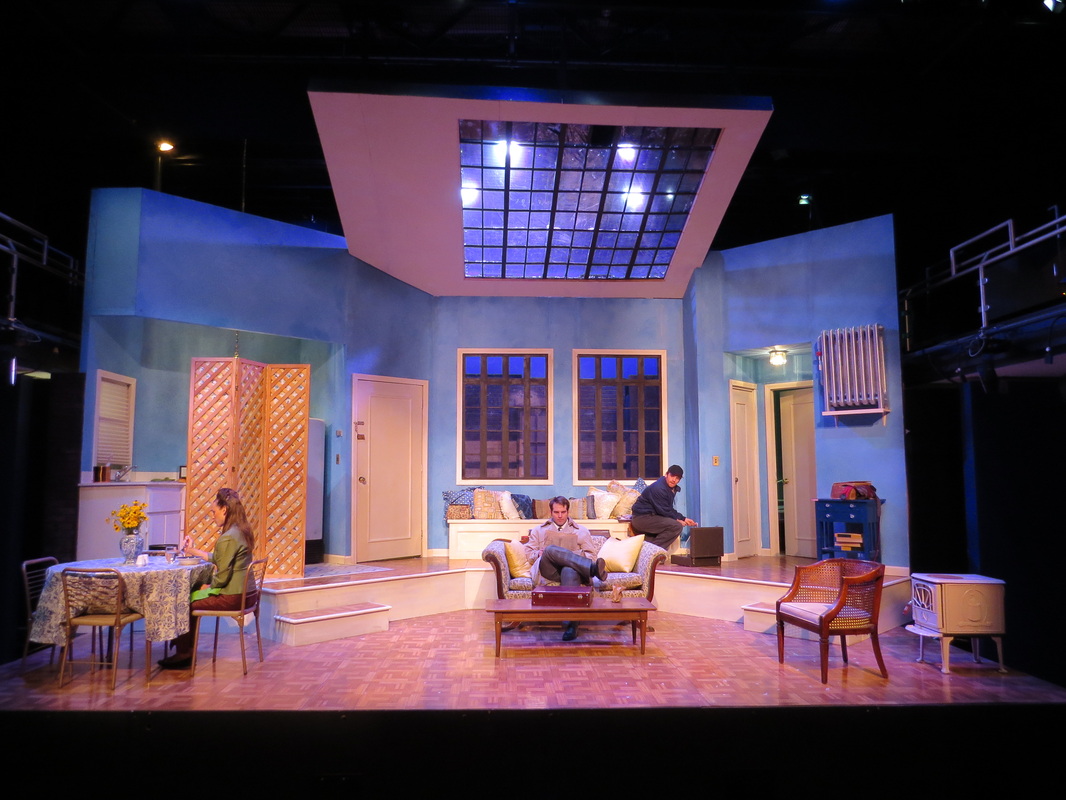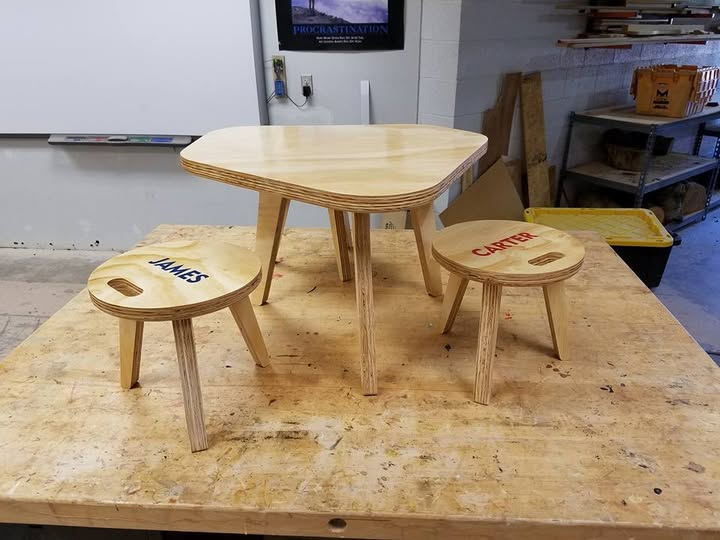High School Curriculum
Engineering Program (Project Lead The Way sequence)
Role: Curriculum designer and instructor (Grades 9–12; Gilbert Public Schools)

Summary: Developed and taught a multi-course engineering pathway through Project Lead The Way (PLTW), offered for dual credit through Rochester Institute of Technology (RIT) and Augustana University. Used the PLTW framework as a foundation while building and redesigning each course to align with district curriculum expectations and Arizona CTE Engineering technical standards. The sequence introduced students to the engineering design process, mechanisms, structures, automation, digital electronics, aerospace concepts, and a capstone engineering project.
Key highlights / my contributions:
- Authored and implemented PLTW-aligned curricula for:
- Introduction to Engineering and Design — engineering design process, 3D modeling, and prototyping
- Principles of Engineering — mechanisms, structures, materials, and automation
- Digital Electronics — circuit design, logic systems, and simulation
- Aerospace Engineering — flight physics, propulsion, and robotics integration
- Engineering Design and Development — senior capstone with community mentorship
- Customized PLTW instructional materials to integrate district learning outcomes, assessment criteria, and Arizona CTE standards
- Integrated CAD and 3D printing into project phases to enhance design iteration and prototype testing
- Established industry and university partnerships for mentorship, project evaluation, and capstone panel review
- Guided students in professional presentations, prototype defense panels, and portfolio documentation
Cybersecurity Program (Project Lead The Way)
Role: Curriculum designer and instructor (Grades 10–12)
Summary: Taught the PLTW Computer Science: Cybersecurity course, offered for dual credit through RIT and Augustana University. Redesigned components of the PLTW framework to meet district objectives and Arizona CTE Information Technology standards. The course introduces students to the expanding field of cybersecurity through problem-based learning, real-world case studies, and ethical simulations. Students act as cybersecurity professionals to analyze, defend, and respond to threats.
Key highlights / my contributions:
- Implemented and adapted the four major instructional units of PLTW Cybersecurity:
- Personal Security — fundamentals of personal data protection, authentication, and digital footprints
- System Security — malware defense, web vulnerabilities, and secure network architecture
- Network Security — network topologies, packet analysis, and intrusion detection
- Applied Cybersecurity — cryptography, digital forensics, and incident investigation
- Reworked PLTW activities and assessments to align with Arizona CTE standards and district pacing requirements
- Integrated ethical decision-making, digital citizenship, and data privacy throughout all modules
- Designed and facilitated hands-on projects using simulated environments and cyberattack scenarios to build technical fluency and critical thinking
- Connected coursework to NIST’s NICE Workforce Framework and local CTE credentialing opportunities
- Guided students toward continued study in computer science, information technology, and cybersecurity certifications
Robotics Program

Robotics and Electronics
Role: Curriculum designer and instructor (Grades 9–12; Highland High School)
Summary: Introductory course with hands-on experience in electronic systems, programmable robotics, and fabrication. Students design and build working robotic systems using metal, wood, and plastic fabrication methods combined with CAD and programming tools. Emphasis on foundational electronics, safety, and control systems used in modern robotics and automation.
Key highlights / my contributions:
- Designed full-year curriculum integrating electronics, robotics, and fabrication aligned to Arizona CTE Automation and Robotics technical standards
- Taught fundamentals of circuitry, sensors, power systems, and programmable logic using real-world components and simulation software
- Integrated CAD and 3D modeling into project workflows to design robot components and enclosures
- Developed student projects in robot construction, control logic, and mechanical design using programmable platforms
- Incorporated safety and documentation standards reflecting professional industry practices
Advanced Robotics and Electronics
Role: Curriculum designer and instructor (Grades 10–12; Highland High School; prerequisite required)
Summary: Advanced course focusing on systems integration, automation, and advanced programming. Students expand skills in electronic design, robot mechanics, fabrication, and the use of programmable logic controllers (PLCs). Mirrors real-world engineering projects, from prototyping to troubleshooting and testing.
Key highlights / my contributions:
- Authored advanced modules in robotics systems design, automation, and electronic circuit development
- Implemented PLCs, robotics teaching software, and simulation environments to enhance understanding of control systems
- Guided students in advanced fabrication techniques using a range of materials and digital tools, including 3D modeling and CAD assemblies
- Created project-based learning experiences where students designed, programmed, and built fully functional robots to perform specific automated tasks
- Aligned the course to Arizona CTE standards for Robotics and Automation and supported pathways to engineering and advanced manufacturing
Theatre Programs

Beginning Theatre Arts
Role: Curriculum designer and instructor (Grades 9–12)
Summary: Introductory course in foundational theatre performance skills, including acting, movement, pantomime, improvisation, theatre history, and play production. Students participate in class performances to develop confidence, creative expression, and ensemble collaboration.
Key highlights / my contributions:
- Designed sequential modules in movement, improvisation, acting technique, and theatre history
- Developed performance-based assessments emphasizing teamwork, expression, and communication
- Structured low-stakes classroom performances that lead to public showcases
- Created rubrics for evaluating acting technique, ensemble collaboration, and production participation
Intermediate Theatre Arts
Role: Curriculum designer and instructor (Grades 9–12; audition and application required)
Summary: Advances performance skills through acting, voice, movement, improvisation, directing, monologue study, audition techniques, and production work. Students perform on campus and in community or festival settings.
Key highlights / my contributions:
- Developed curriculum units on vocal technique, dialects, directing, and audition preparation
- Organized performance opportunities in local festivals and community outreach events
- Implemented an audition process and tiered advancement structure
- Created detailed performance rubrics emphasizing voice, character, and stage presence
Advanced Theatre Arts
Role: Curriculum designer and instructor (Grades 10–12; audition and application required)
Summary: Explores acting and play performance in depth, including voice and diction, dialects, movement specialties, period acting, method acting, improvisation, and performance. Students perform in class, in competitions, and in community outreach programs.
Key highlights / my contributions:
- Designed advanced modules in acting styles, dialects, and character study
- Developed outreach and competition participation processes
- Created evaluation criteria for performances, direction, and peer critique
- Supported repeatable credit for students demonstrating leadership and mastery
Performance Theatre Arts
Role: Curriculum designer and instructor (Grades 11–12; audition and application required)
Summary: Capstone theatre course refining student performance skills through one-act productions, acting festivals, and community outreach projects. Students produce and perform original and established works, emphasizing professionalism, collaboration, and leadership.
Key highlights / my contributions:
- Directed student-led one-act plays and competitive performance projects
- Guided students through production management, publicity, and outreach roles
- Created leadership rotation structure for directing and stage management
- Coordinated with local theatre organizations for community-based projects
Technical Theatre Programs

Introduction to Technical Theatre
Role: Curriculum designer and instructor (Grades 9–12)
Summary: Students explore scenic design, construction, lighting, sound, costume and makeup design, stage management, and theatre history. Coursework combines classroom study with hands-on production work.
Key highlights / my contributions:
- Authored curriculum integrating design theory with production application
- Designed projects in scenic construction, lighting and sound setup, and costume rendering
- Created safety certification modules for scene shop operations
- Coordinated after-school and weekend technical support for live productions
Intermediate Technical Theatre
Role: Curriculum designer and instructor (Grades 10–12; prerequisite required)
Summary: Deepens production experience through advanced construction techniques and design elements in lighting, sound, and scenery. Students take on increasing responsibility in technical design and stage management.
Key highlights / my contributions:
- Developed modules in advanced scenic and prop construction
- Created training in lighting design, cueing, and soundboard operation
- Implemented design review and critique sessions to refine student work
- Established student leadership roles in production management
Advanced Technical Theatre
Role: Curriculum designer and instructor (Grades 10–12; application required)
Summary: Students integrate prior knowledge of lighting, sound, set design, and stage management to lead full-scale productions. Emphasis on independent design, leadership, and collaborative problem-solving in real production environments.
Key highlights / my contributions:
- Designed student-led production workflow from concept to strike
- Developed leadership pathway for technical crew roles
- Created production documentation templates for schedules, cue sheets, and budgets
- Guided reflection and critique to build student professional skills
Woods Program

Woods 1
Role: Curriculum designer and instructor (Grades 9–12)
Summary: Introductory woodworking course covering safe and precise tool operation, measurement, and project design. Students practice cabinetmaking and furniture-making techniques using industry-standard equipment and materials while emphasizing shop safety and craftsmanship.
Key highlights / my contributions:
- Designed a full-year curriculum aligned to Arizona CTE Cabinetmaking technical standards and the Wood Technology & Processes framework
- Established comprehensive safety training modules and certification assessments for all major stationary and portable tools
- Developed sequential projects that progress from basic joinery to full furniture builds, integrating reading of shop drawings and material planning
- Incorporated consumable-material budgeting and sustainability practices to mirror industry workflows
- Prepared students for industry-recognized certification opportunities available through Arizona CTE
Woods 2
Role: Curriculum designer and instructor (Grades 10–12)
Summary: Advanced course expanding student proficiency in cabinetmaking and furniture design. Learners plan, design, and construct complex projects, applying advanced joinery, precision measurement, finishing, and design customization. Students can earn industry certifications and participate in local showcases or competitions.
Key highlights / my contributions:
- Authored advanced curriculum modules focused on cabinetry, furniture joinery, and finishing systems aligned to Arizona CTE Cabinetmaking II standards
- Introduced digital fabrication concepts (CNC or CAD layout) to integrate modern manufacturing tools with traditional craftsmanship
- Implemented project-proposal process where students design, budget, and present detailed build plans before construction
- Guided students through independent and collaborative builds emphasizing precision, problem-solving, and design aesthetics
- Coordinated with school administration to link coursework to industry credential pathways and work-based learning opportunities